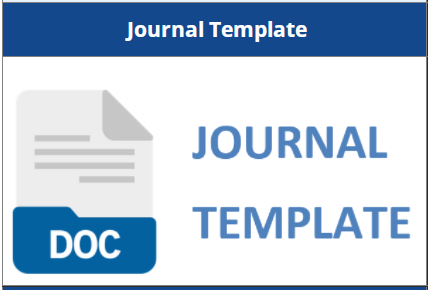PANDEMI COVID-19 SEBAGAI MOMENTUM KONSOLIDASI WISATA NOMADIK DI KAWASAN CANGGU, BALI
Abstract
The Canggu area is one of the most popular nomadic tourist destinations in the world. This makes the development of the Canggu area increasingly important. With the COVID-19 pandemic, the nomadic style of tourism in the Canggu area has become adaptive tourism during the pandemic. This study aims to determine the stages of development of nomadic tourism in the Canggu area using a deductive qualitative method. The results of the study show that the Canggu area has undergone four stages: exploration, involvement, development, and consolidation. Observations show that currently Canggu Area tourism in the tourism area life cycle analysis is at stage 4, or the consolidation stage. COVID-19 has brought this area to a consolidation stage. The existence of the COVID-19 pandemic requires the concept of nomadic tourism to adapt and strengthen its quality. This has received a positive response as seen from a good reputation and structure in accommodating the needs of digital nomads that occurred during the pandemic in this region. so that the consolidation phase can strengthen the attractiveness of the Canggu Area as a nomadic tourism destination in the future.
Downloads
References
[2] Creswell, J. W. (2009). Research Design: Qualitative, Quantitative, and Mixed Methods Approaches. London: SAGE Publication Ltd.
[3] Damanik et al, J. W. (2018). Perkembangan Siklus Hidup Destinasi Pariwisata di Indonesia, Analisis Berdasarkan Data Makro Badan Pusat Statistik 2002-2012. Jurnal Nasional Pariwisata, 10(2), 1-13.
[4] Ferdinan. (2021). Dispar Bali Akan Kembangkan Digital Nomad Tourism di Pulau Dewata. VIO.
[5] Gossling, S., Scott, D., & Hall, C. M. (2020). Pandemic, Tourism and Global Change: S Rapid Assessment of COVID-19. Journal Of Sustainable Tourism, 29, 1-20.
[6] Kemenpar, Kementrian Pariwisata. (2018). Materi Rapat Kerja Nasional Pariwisata. Nusadua Bali: BNDCC.
[7] Mahadewi, N.M. (2019). Nomadic Tourism, Education Tourism, Digital Tourism and Event Tourism for Sustainable Tourism. Journal of Adv. Research in Dynamic and Control Systems Vol.11.
[8] Moleong, L. J. (2014). Metodologi Penelitian Kualitatif Edisi Revisi. Bandung : PT. Remaja Rosadakarya Offset.
[9] Pambudi, S., & Rahmi, D. H. (2022). Siklus Hidup Wisata Alam Top Selfie Pinusan Kragilan di Taman Nasional Gunung Merbabu. Jurnal Riset Pembangunan, 4(2), 105-112.
[10] Permilasari&Arida, N. K. (2014). Bentuk Pengelolaan Pantai Batu Bolong Sebagai Daya Tarik Wisata Surfing di Desa Canggu Kecamatan Kuta Utara, Kabupaten Badung. Jurnal Destinasi Pariwisata, 2(2), 37-48.
[11] Prabawa, I. W., & Pertiwi, P. R. (2020). The Digital Nomad Tourist Motivation in Bali: Exploratory Research Based on Push and Pull Theory. . Athens H=Journal of Tourism Vol.7, 161-174.
[12] Prabawati, N. P. . (2020). Desa Canggu, Bali Sebuah Basecamp Bagi Digital Nomad? Identifikasi Produk Wisata Berdasarkan 4A (Attraction, Amenity, Accesibility, Ancilliary). Jurnal Kepariwisataan Indonesia.
[13] Pranata, G. A., & Idajati, H. (2018). Konsep Tourism Area Life Cycle dalam Mengidentifikasi Karakteristik Taman Wisata di Bantaran Sungai Kalimas Surabaya. Jurnal Teknik ITS, 7(2), 74-80.
[14] Rhismawati, Nih luh. (2020, Mei 27). Bali lirik potensi wisatawan "digital nomad". Kuta, Badung, Bali.
[15] Sahli, E. (2020). Tourism Destination Development An Application of Butler’s (1980) Tourism Area Life Cycle Model to Hammamet, Tunisia. ResearchGate.
[16] Situmorang, R., Masatip, A., & Elyanta, M. (2022). Position Of Tourism Destination Area Development Based On Tourism Area Cycle Of Evolution Taman Wisata Iman Sitinjo. Jurnal Sosial Humaniora dan Pendidikan, 1(3), 17-22.
[17] Suryaningsih, I. A., & Suryawan, I. B. (2016). Posisi Desa Serangan Berdasarkan Analisis Tourusm Area Life Cycle. Jurnal Destinasi Pariwisata, 4(2), 1-6.
[18] Umilia, E. (2016). Tipologi Pengembangan Wisata Berdasarkan Konsep Butler (Studi Kasus : Kabupaten Mojokerto). Jurnal Penataan Ruang, 11(1), 39-49.
[19] UNWTO. (2020). UNWTO World Tourism Barometer. Special fokus on the impact of covid-19.
[20] Yohanes, M. (2019). Studi Digital Nomad di Kota Bandung. Bandung: Sekolah Tinggi Pariwisata NHI.












